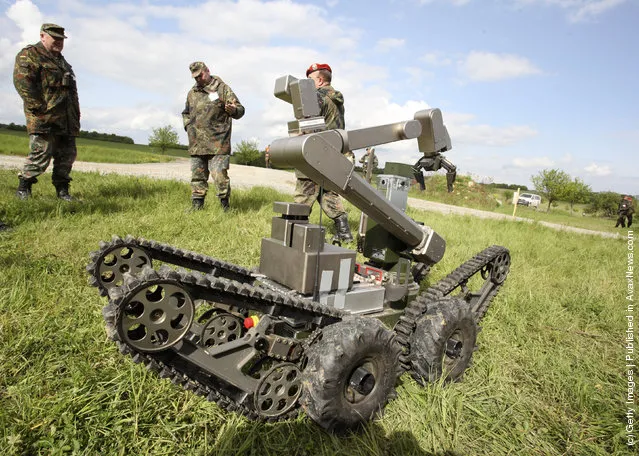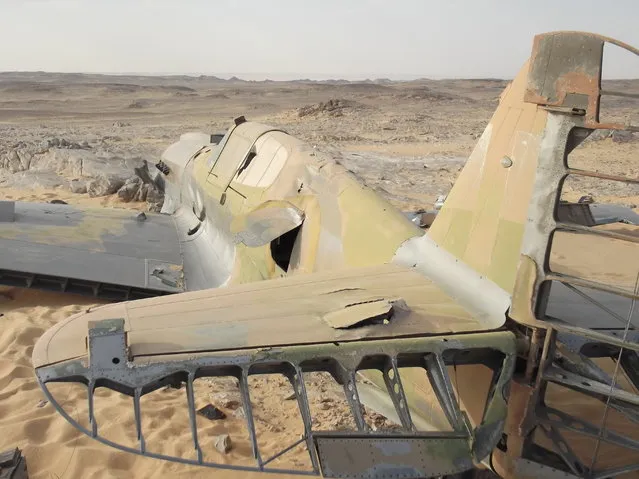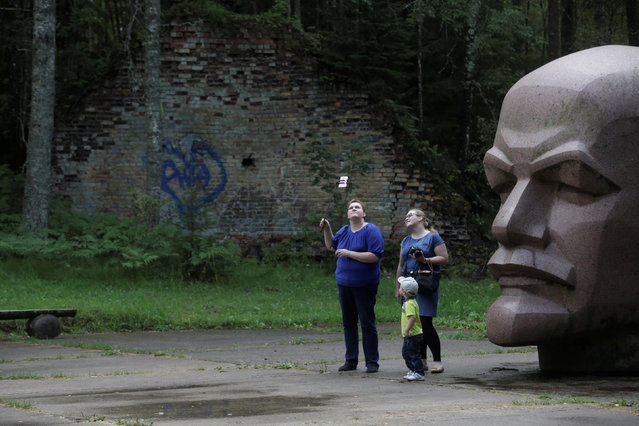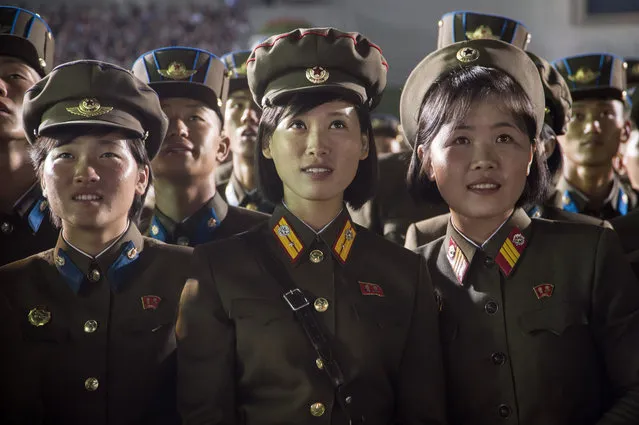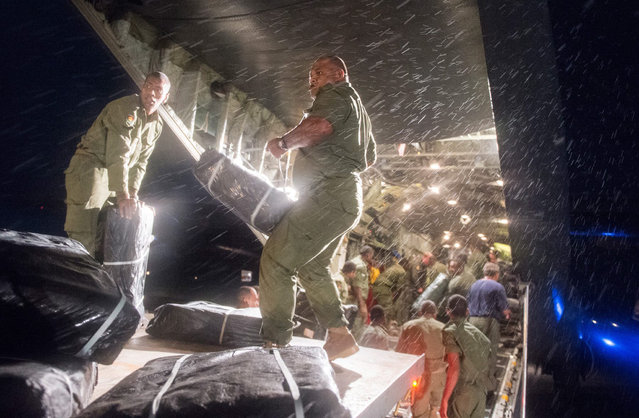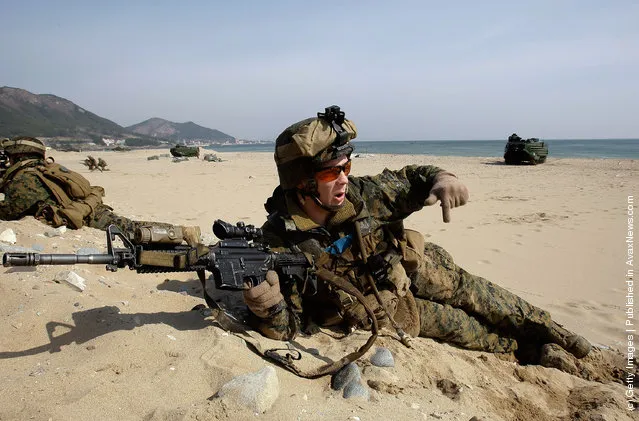
U.S. Marine soldiers from 31st Marine Expeditionary Unit, Battalion landing team deployed from Okinawa, Japan, participate in the U.S. and South Korean Marines joint landing operation at Pohang seashore on March 29, 2012 in Pohang, South Korea. Though South Korean has remained technically at war with North Korea since the end of the Korean War in 1953, the tension of Korean Peninsula has again raised as Pyongyang's new leader Kim Jong-Eun administration announced to launch a “Satellite” between April 12 to 16. (Photo by Chung Sung-Jun/Getty Images)
29 Mar 2012 12:47:00,post received
0 comments

